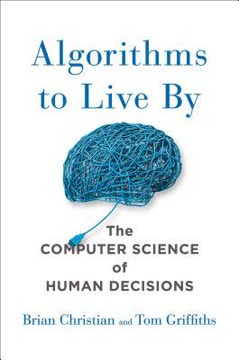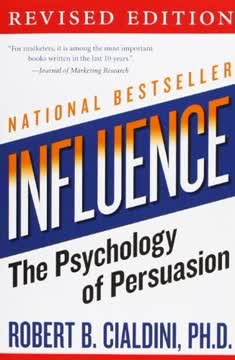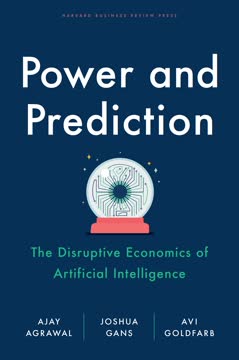Key Takeaways
1. Recognizing patterns is crucial for rapid, effective decision-making
The power of intuition enables us to size up a situation quickly.
Pattern recognition is a cornerstone of expert decision-making. Experienced professionals, such as firefighters, nurses, and military commanders, can rapidly assess complex situations by recognizing familiar patterns. This ability allows them to make quick, effective decisions without consciously analyzing every detail.
Key aspects of pattern recognition:
- Typicality: Recognizing when a situation fits a familiar pattern
- Anomalies: Noticing when something doesn't fit the expected pattern
- Leverage points: Identifying key factors that can be used to solve problems
By developing this skill through experience, decision-makers can navigate complex situations more efficiently and effectively than those relying solely on analytical approaches.
2. Mental simulation helps evaluate options and anticipate outcomes
Mental simulation is the engine for diagnosing the causes of the problem, along with their trends.
Mental simulation is a powerful cognitive tool that allows decision-makers to imagine how a course of action might unfold. This process helps evaluate options, anticipate potential problems, and refine plans before implementation.
Key uses of mental simulation:
- Diagnosis: Understanding the causes of current problems
- Prediction: Anticipating future events and outcomes
- Problem-solving: Generating and evaluating potential solutions
Techniques like the "premortem" strategy, where team members imagine a future failure and explain its causes, can help identify potential pitfalls and improve plans before execution. By honing this skill, decision-makers can better prepare for various scenarios and make more informed choices.
3. Expertise allows for intuitive decision-making in complex situations
Experts see the world differently. They see things the rest of us cannot.
Expertise development is crucial for effective decision-making in complex domains. As individuals gain experience, they develop a rich mental repository of patterns, cues, and strategies that allow them to make rapid, intuitive decisions.
Key aspects of expertise:
- Perceptual skills: Noticing subtle cues and patterns
- Mental models: Understanding how systems work
- Automaticity: Performing complex tasks with minimal conscious effort
Expertise enables professionals to:
- Make fine discriminations
- Detect anomalies and potential problems early
- Generate and evaluate options quickly
- Adapt to changing situations more effectively
By fostering expertise through deliberate practice and experience, organizations can improve their overall decision-making capabilities and performance.
4. Stories and analogies are powerful tools for understanding and problem-solving
Stories are remembered because they are dramatic. They are used because we can identify with one or more of the actors. They are told and retold because of the wisdom they contain—the lessons that keep emerging with each telling.
Storytelling and analogies are effective methods for sharing knowledge, understanding complex situations, and solving problems. They provide context, emotional engagement, and memorable lessons that can be applied to new situations.
Benefits of stories and analogies in decision-making:
- Knowledge transfer: Sharing expertise and lessons learned
- Problem-solving: Applying past solutions to new challenges
- Sense-making: Understanding complex situations through familiar frameworks
Techniques like the Critical Decision Method, which uses structured interviews to elicit expert knowledge through stories of challenging incidents, can help organizations capture and share valuable lessons. By incorporating storytelling and analogical reasoning into training and decision-making processes, teams can improve their problem-solving capabilities and learn from others' experiences.
5. Team decision-making can surpass individual capabilities when properly leveraged
This is the power of the team mind: to create new and unexpected solutions, options, and interpretations, drawing on the experience of all the team members to generate products that are beyond the capabilities of any of the individuals.
Effective team decision-making can produce results that surpass the capabilities of individual team members. By leveraging diverse experiences, perspectives, and skills, teams can generate more creative solutions and make better decisions in complex situations.
Key aspects of successful team decision-making:
- Shared mental models: Developing a common understanding of the situation
- Role clarity: Understanding individual responsibilities and contributions
- Cognitive diversity: Leveraging different perspectives and expertise
- Metacognition: Monitoring and adjusting team processes
Challenges to overcome:
- Groupthink: Avoiding premature consensus
- Communication barriers: Ensuring clear and effective information sharing
- Coordination: Aligning individual efforts towards common goals
By fostering a team environment that encourages open communication, diverse perspectives, and collective problem-solving, organizations can harness the full potential of their teams' decision-making capabilities.
6. Communicating intent is essential for effective teamwork and leadership
Communicating intent helps a team member to read the mind of the person requesting an action.
Clear communication of intent is crucial for effective teamwork and leadership. By sharing the purpose, objectives, and rationale behind decisions and actions, leaders enable team members to make better decisions, adapt to changing circumstances, and work more autonomously.
Key elements of communicating intent:
- Purpose: Explaining the higher-level goals
- Objectives: Describing the desired outcome
- Rationale: Sharing the reasoning behind decisions
- Key decisions: Highlighting critical choices that may need to be made
- Constraints: Outlining limitations and considerations
Benefits of effective intent communication:
- Improved team coordination
- Enhanced problem-solving and adaptability
- Reduced need for micromanagement
- Increased team member engagement and ownership
By mastering the art of communicating intent, leaders can empower their teams to make better decisions and achieve superior results, even in complex and rapidly changing environments.
7. Rational analysis has its place, but can be detrimental when overused
Hyperrationality is a mental disturbance in which the victim attempts to handle all decisions and problems on a purely rational basis, relying on only logical and analytical forms of reasoning.
Balancing analytical and intuitive approaches is essential for effective decision-making. While rational analysis is valuable for certain types of problems, overreliance on analytical methods can lead to "hyperrationality" and poor decisions in complex, real-world situations.
Limitations of purely rational approaches:
- Difficulty in decomposing complex problems into basic elements
- Ambiguity in applying rules and procedures
- Challenges in setting up calculations with subjective judgments
- Risk of combinatorial explosions in complex situations
Benefits of combining analytical and intuitive approaches:
- Leveraging both experience-based pattern recognition and logical reasoning
- Adapting decision-making strategies to the nature of the problem
- Avoiding analysis paralysis and enabling timely action
By recognizing the strengths and limitations of both analytical and intuitive approaches, decision-makers can choose the most appropriate strategy for each situation and avoid the pitfalls of hyperrationality.
8. Poor decisions often stem from lack of experience or information, not cognitive biases
Naturalistic decision-making researchers are coming to doubt that errors can be neatly identified and attributed to faulty reasoning.
Understanding the true causes of poor decisions is crucial for improving decision-making processes. While cognitive biases are often blamed for decision errors, research in naturalistic decision-making suggests that poor decisions are more frequently caused by lack of experience, insufficient information, or failure to recognize early warning signs.
Common causes of poor decisions:
- Lack of experience: Insufficient domain knowledge or situational awareness
- Inadequate information: Missing or unreliable data
- De minimus errors: Explaining away warning signs or contradictory evidence
Implications for improving decision-making:
- Focus on developing expertise through deliberate practice and experience
- Improve information gathering and sharing processes
- Foster a culture of questioning assumptions and exploring alternative explanations
By addressing these root causes rather than focusing solely on cognitive biases, organizations can more effectively improve their decision-making capabilities and outcomes.
9. Uncertainty is inevitable, but skilled decision-makers learn to act despite it
Because uncertainty is inevitable, decisions can never be perfect. Often we believe that we can improve the decision by collecting more information, but in the process we lose opportunities. Skilled decision makers appear to know when to wait and when to act.
Managing uncertainty is a critical skill for effective decision-making. In real-world situations, complete certainty is rarely achievable, and waiting for perfect information can lead to missed opportunities.
Sources of uncertainty:
- Missing information
- Unreliable or conflicting data
- Ambiguity in interpretation
- Complexity of the situation
Strategies for dealing with uncertainty:
- Accepting the inevitability of incomplete information
- Developing flexible plans that can adapt to changing circumstances
- Focusing on shaping the environment rather than predicting every outcome
- Balancing the need for information with the urgency of action
By embracing uncertainty and developing strategies to act effectively despite it, decision-makers can maintain agility and seize opportunities in complex, dynamic environments. This approach allows for more timely and effective decisions than waiting for complete certainty, which is often unattainable in real-world situations.
Last updated:
FAQ
What's Sources of Power about?
- Focus on Decision Making: Sources of Power by Gary Klein delves into how people make decisions, especially under uncertainty and time constraints, highlighting the strengths of decision-makers.
- Recognition-Primed Decision Model: Introduces the Recognition-Primed Decision (RPD) model, explaining how experienced individuals use intuition and past experiences for quick, effective decisions.
- Naturalistic Decision Making: The book is rooted in naturalistic decision-making research, contrasting real-world decision-making with traditional lab-based studies.
Why should I read Sources of Power?
- Practical Insights: Offers practical insights applicable across various fields like firefighting, military, and business, enhancing decision-making skills.
- Understanding Intuition: Demystifies intuition, showing its power for experienced decision-makers and how to harness it effectively.
- Real-World Examples: Uses compelling real-world stories to illustrate points, making the content relatable and engaging.
What are the key takeaways of Sources of Power?
- Intuition is Valuable: Emphasizes intuition as a critical source of power in decision-making, allowing quick assessment and effective responses.
- Mental Simulation: Highlights the role of mental simulation in evaluating actions and outcomes, aiding decision-makers in foreseeing consequences.
- Leverage Points: Introduces leverage points, showing how small changes can significantly impact decision-making and problem-solving.
What is the Recognition-Primed Decision (RPD) model in Sources of Power?
- Two-Stage Process: Describes a two-stage process where decision-makers recognize familiar situations and evaluate actions through mental simulation.
- Quick Decision Making: Allows rapid decision-making without extensive option comparisons, useful in high-pressure situations.
- Experience-Based: Relies heavily on the decision-maker's experience, drawing on past knowledge to inform current choices.
How does intuition play a role in decision-making according to Sources of Power?
- Pattern Recognition: Intuition is rooted in recognizing patterns and typical situations based on prior experiences, aiding quick assessments.
- Emotional Reactions: Often accompanied by emotional reactions that guide decision-making, as seen in studies of brain-damaged patients.
- Not Infallible: While powerful, intuition is not infallible; decision-makers must be aware of its limitations and adjust judgments as needed.
How does Sources of Power define expertise?
- Perceptual Skills: Expertise involves advanced perceptual skills, allowing individuals to notice subtle cues and patterns novices might miss.
- Experience-Based Learning: Develops through extensive experience, enabling recognition of typical situations and effective response application.
- Mental Models: Experts possess rich mental models, helping them simulate outcomes and anticipate action consequences for informed decisions.
What role do stories play in decision making according to Sources of Power?
- Vicarious Learning: Stories enable vicarious learning, allowing individuals to gain insights from others' experiences without direct exposure.
- Cultural Transmission: Help preserve organizational values and norms, providing newcomers with a sense of the environment and expectations.
- Understanding Complex Situations: Encapsulate complex situations, making it easier for decision-makers to grasp nuances and implications.
What is hyperrationality, and why is it a problem according to Sources of Power?
- Over-Reliance on Logic: Hyperrationality involves excessive reliance on rational thinking, leading to analysis paralysis and hindering decision-making.
- Neglecting Experience: Often results in ignoring experiential sources like intuition and mental simulation, crucial for navigating complex situations.
- Decision-Making Paralysis: Can overwhelm individuals with the need for empirical evidence, delaying or preventing necessary actions.
How does Sources of Power challenge traditional decision-making models?
- Critique of Rational Models: Critiques traditional models emphasizing exhaustive analysis, arguing they don't reflect real-world decision-making.
- Emphasis on Experience: Highlights the importance of experience and intuition, often more effective than formal analytical methods.
- Nonlinear Problem Solving: Presents a nonlinear approach, where decision-makers adapt goals and strategies dynamically based on situations.
How can I apply the concepts from Sources of Power in my own decision-making?
- Trust Your Intuition: Recognize and trust your intuition, especially in familiar situations, reflecting on past decisions for guidance.
- Practice Mental Simulation: Use mental simulation to evaluate actions before deciding, visualizing steps and anticipating outcomes.
- Identify Leverage Points: Look for leverage points in decision-making scenarios, considering how small adjustments can improve outcomes.
What are the limitations of rational analysis as discussed in Sources of Power?
- Inability to Capture Complexity: Rational analysis often oversimplifies real-world complexities, leading to inadequate conclusions.
- Ambiguity in Rules: Ambiguous rules can cause misinterpretations, as decision-makers struggle to apply them correctly.
- Subjective Judgments: Requires subjective judgments that can introduce biases, undermining analysis reliability.
What are the best quotes from Sources of Power and what do they mean?
- "Intuition is a powerful source of decision-making.": Highlights intuition's central role, grounded in experience, for effective decision-making.
- "Mental simulation allows us to evaluate potential actions.": Emphasizes mental simulation's importance in foreseeing consequences and adjusting plans.
- "Leverage points can turn a situation around.": Illustrates how small changes can lead to significant improvements in decision-making processes.
Review Summary
Sources of Power: How People Make Decisions explores decision-making in high-pressure environments. Readers appreciate Klein's focus on real-world examples and intuitive decision-making, contrasting with traditional analytical models. The book offers insights into expert thinking, mental simulation, and team dynamics. While some find it dry or repetitive, many praise its depth and practical applications. Critics note its length and academic tone, but overall, readers value its contribution to understanding decision-making processes, particularly for those in leadership or high-stakes professions.
Similar Books










Download PDF
Download EPUB
.epub digital book format is ideal for reading ebooks on phones, tablets, and e-readers.







